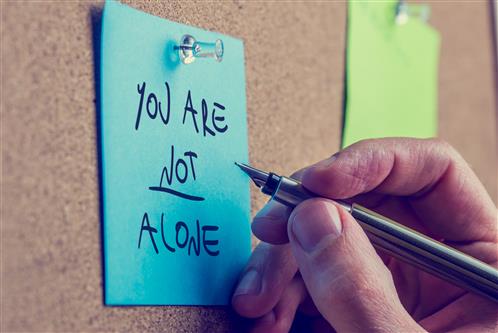Cocaine Addiction
Sections: Finding Hope | Origins | Powerful Short-Lived High | Dependency | Signs Someone Is Using Cocaine | Symptoms
Despite declining use, cocaine remains one of the most dangerous and addictive substances distributed throughout the world. Users prize it for its stimulant-like qualities, which send mood and energy levels soaring. As soon as the initial euphoria wears off, however, a different picture emerges. A crash inevitably follows the high. Depression can take hold, presenting one of the key signs of cocaine addiction. Addiction becomes a real possibility. Physical ailments add to the sense of defeat.
Fortunately, advances in cocaine addiction treatment have made freedom possible. With the right combination of cocaine detox, behavioral therapy, and ongoing support, anyone can overcome the disease of addiction and go on to lead a happy, healthy life. The key is to reach out and find a rehab program that will guide you or your loved one to a successful recovery.
COCAINE ADDICTION TREATMENT CAN SAVE LIVES AND OFFER HOPE

Cocaine can damage the heart, the brain, and the blood vessels. It can also wreak havoc on a person’s mental and emotional state. Fortunately, there are a number of effective treatment options, from inpatient cocaine detox to outpatient cocaine rehab, that can help individuals conquer an addiction to cocaine.
At Yellowstone Recovery, we offer a combination of detox and behavioral therapy. Our cocaine rehab facilities provide a safe, comfortable environment where people can beat back their disease and press the “restart” button. No matter how long or how much you’ve used, we can help you on the road to recovery. There is hope. There is a way out.
FROM THE COCO PLANT TO CRACK COCAINE: THE HISTORY OF A DANGEROUS DRUG
Cocaine is a highly addictive drug extracted from leaves of the coca plant, which grows naturally in Central and South America. Scientists first created pure cocaine in the mid-1800s and, for a while, it enjoyed widespread social acceptance.
Initially used in tonics, medications, and even soft drinks, cocaine was outlawed by the government in the early 20th century after the authorities became concerned about the growing trend of recreational use and the negative effects it produced. Those effects included health complications, mental disturbances, and social repercussions. Nowadays, people are more aware of the dangers, but that hasn’t eliminated the problem.
Today, drug dealers sell cocaine in a variety of forms. Most people are familiar with the fine, white powder that users snort up their noses or rub on their gums. The powder can also be dissolved in water and injected into a person’s veins. Such high-quality powder cocaine peaked in popularity during the 1970s and 80s when it became a central feature of the “fast life.” For decades, the world’s wealthy and famous considered cocaine to be something of a status symbol, the perfect accompaniment to their “anything is possible” life.
The arrival of crack, the most pernicious form of cocaine, shattered the belief that this was exclusively a rich person’s drug. Made by mixing powder cocaine with water and baking soda, this crystalized version of cocaine was cheaper to make and cheaper to buy. It also created a more instant effect, which increased its addictive potential.
COCAINE PROVIDES A POWERFUL BUT SHORT-LIVED HIGH
The compelling allure of cocaine raises important questions about its addictive nature and the risks associated with its use.

IS COCAINE ADDICTIVE?
Cocaine is indeed addictive. Its ability to rapidly alter brain chemistry and create a dependency, even after short-term use, makes it one of the more addictive substances available.
HOW ADDICTIVE IS COCAINE?
Cocaine is highly addictive. Users often develop a tolerance quickly, requiring increasing amounts to achieve the same high. This escalation can swiftly lead to addiction, with many users becoming dependent after just a few uses.
WHY IS COCAINE ADDICTIVE?
People who use cocaine become more alert, more energized, and more excited. Their self-confidence shoots through the roof. They may feel as if they’re on top of the world. That’s because, at a physiological level, cocaine increases the levels of dopamine in a user’s brain. Dopamine regulates feelings of pleasure, and so a burst of dopamine means a burst of exhilaration and satisfaction.
Those positive feelings can be powerful, but they’re also short-lived. When they disappear, depression, boredom, and anxiety can take their place. Cocaine highs also have their dark side. Instead of joy, many users experience:
- Paranoia
- Anger
- Irritability
- Sensitivity to light, sound, or touch
Unfortunately, the short-term euphoria leads to repeated use. Some return to the drug repeatedly as a form of self-medication. Others simply enjoy the high. In either case, recreational use can quickly lead to dependency and even full-blown addiction. As a user’s body develops a tolerance to the drug, the effectiveness of each dose decreases. The person must consume more of it in order to experience the same effects. What began as an experiment becomes a never-ending and life-altering search for that familiar feeling.
COCAINE DEPENDENCE COMES WITH A HEAVY PRICE
Over the years, people have given cocaine many street names—blow, coke, crack, rock, snow, flake, nose candy, lady, snowbird. No matter what label it goes under, the long-term effects are the same. Tolerance can develop quickly and lead to full-blown addiction. In addition to the social and economic costs, cocaine addiction exacts a heavy toll on users and their families and friends.
Cocaine affects the body in many ways, often showing distinct signs of cocaine addiction. Depending on the frequency and method of use, side effects of cocaine can range from headaches to stroke, from nosebleeds to heart attacks. Some side effects of frequent cocaine use include:
- Headaches
- Nosebleeds, sinus problems, and tissue damage (if snorted)
- Lung damage (when smoked)
- Bowel or intestinal decay (if swallowed)
- HIV or hepatitis (if injected)
- Sexual trouble or dysfunction
- Mood disturbances
- Seizures and convulsions
- Heart disease
- Heart attack
- Stroke
To add to the danger, suppliers often lower their costs by cutting pure cocaine with other substances or drugs—anything from methamphetamines and caffeine to boric acid and laundry detergent. When you throw in the risk of inhaling, smoking, or ingesting potentially toxic substances, it’s no wonder cocaine is considered a major public health threat.
Given the potential for serious illness and even death, it’s crucial that cocaine users find the path that leads away from addiction and toward recovery. There’s no reason to stay chained to the ups and downs of cocaine highs. With modern treatment options, it’s possible to beat back the disease of addiction and reassert your independence.
HOW DO YOU KNOW IF SOMEONE HAS RECENTLY SNORTED COCAINE?
When someone uses cocaine, their pupils dilate. Snorting cocaine leads to other noticeable physiological reactions, such as a constant need to sniff, a perpetually runny nose, or repeated nosebleeds. Those who inject cocaine will have track marks on their body, and those who smoke crack may have burns on their fingers or lips.
In addition to physiological signs, onlookers may notice behavioral changes, which are critical signs of cocaine addiction. People who use cocaine frequently experience:
- A sense of euphoria
- Abnormal excitement
- Excessive confidence
- Paranoia
- Aggressiveness
- Poor judgment
- Delusions
- Hallucinations
No matter how the drug is administered, the severity of symptoms often increases with more frequent use and higher doses.
WHAT ARE THE SYMPTOMS OF COCAINE USE?
Physical complications of cocaine use and long-term effects for those using cocaine over an extended period of time, include:
| Physical Complications of Cocaine | Long-Term Cocaine Effects |
| » Constricted blood vessels » Rapid heart rate » Enlarged heart » Cardiac arrest » Heart attack |
» Depression » Agitation » Apathy » Fatigue » Insomnia » Cravings |
UNDERSTANDING COCAINE WITHDRAWAL
The journey to overcome cocaine addiction often involves confronting withdrawal symptoms, a critical phase where cocaine addiction signs become more apparent. Withdrawal from cocaine can manifest in various ways, including fatigue, increased appetite, insomnia, vivid and unpleasant dreams, and a general feeling of discomfort.
Psychological symptoms such as depression, anxiety, and cravings are also common, marking a challenging but essential step towards recovery.
These symptoms not only highlight the physical and psychological grip of the addiction but also underscore the importance of professional support during this period.
TAKE THE FIRST STEP TOWARDS HEALING
Recognizing these signs of cocaine addiction is pivotal in the journey to recovery. If you or someone you know is grappling with substance abuse, don’t let another day pass in the shadow of dependence.
Reach out to Yellowstone Recovery today. Our dedicated team is ready to provide the support and guidance needed to navigate through withdrawal and embark on a path to a healthier life.
- Treatment Options
- Program Curriculum
- Program Services








